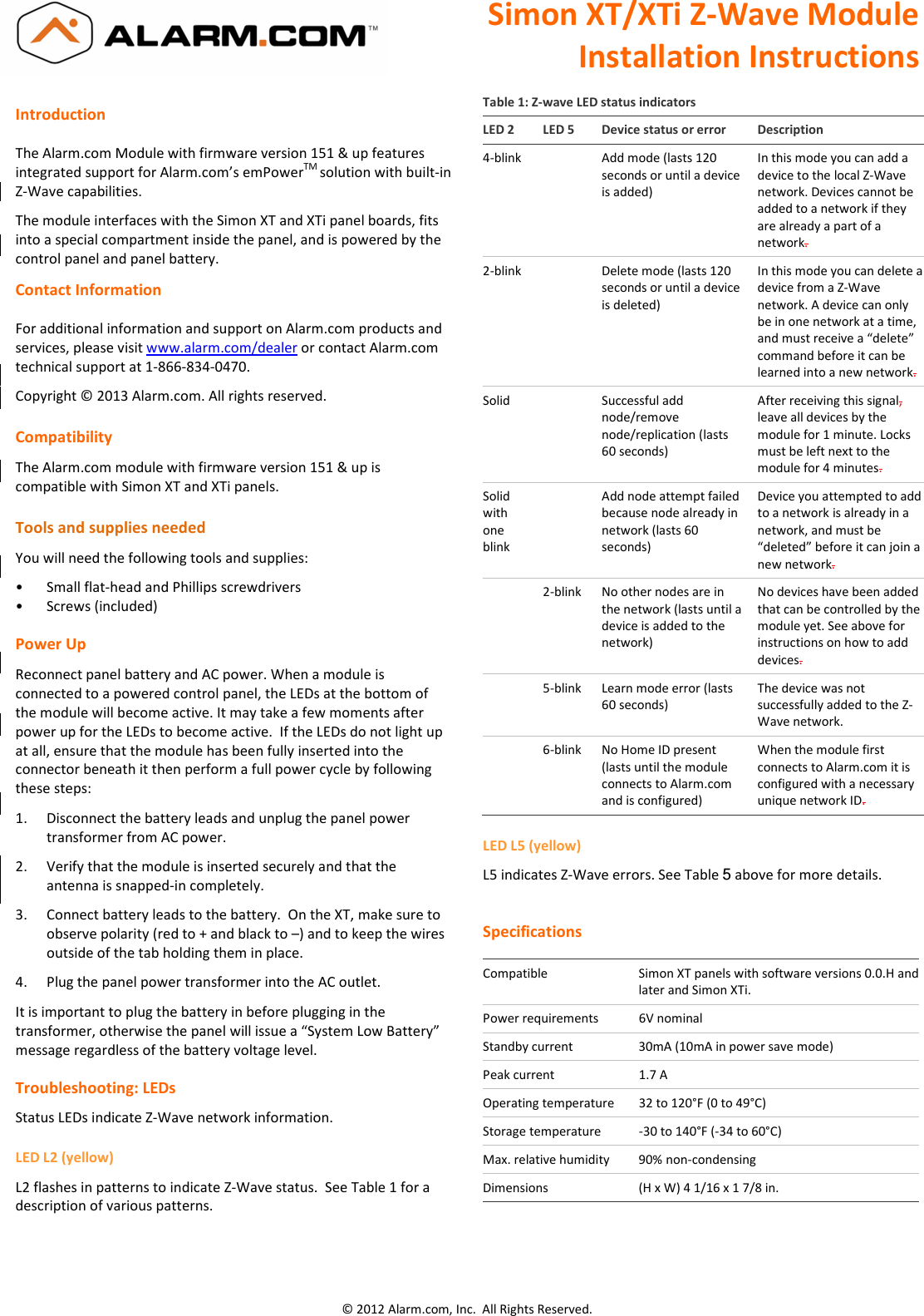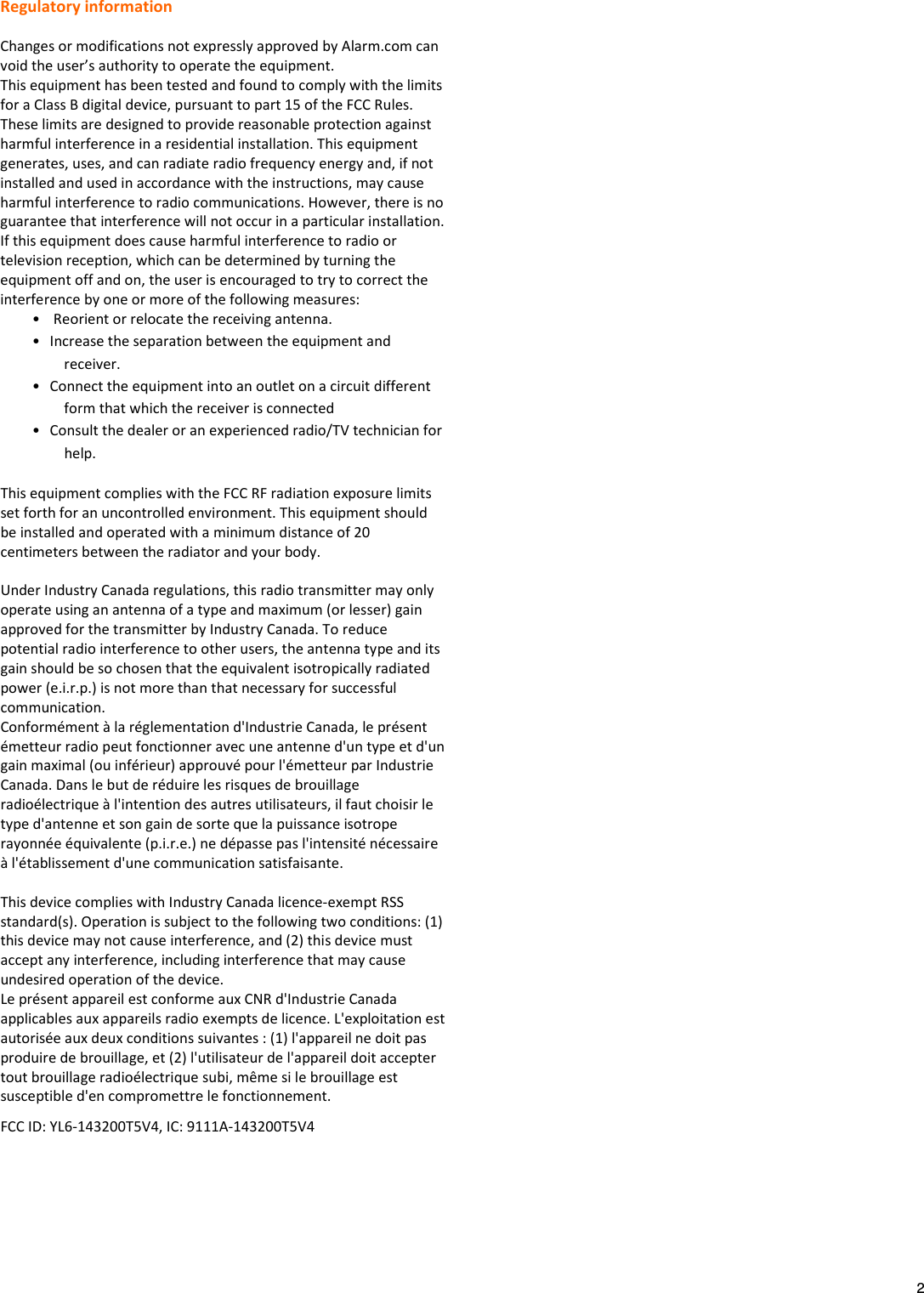Alarm com orporated 143200T5V4 Wireless Transceiver that operates in the amateur band 902-928 MHz User Manual User Guide Rev 1
Alarm.com Incorporated Wireless Transceiver that operates in the amateur band 902-928 MHz User Guide Rev 1
Contents
- 1. User Manual
- 2. User Guide Rev. 1
User Guide Rev. 1

